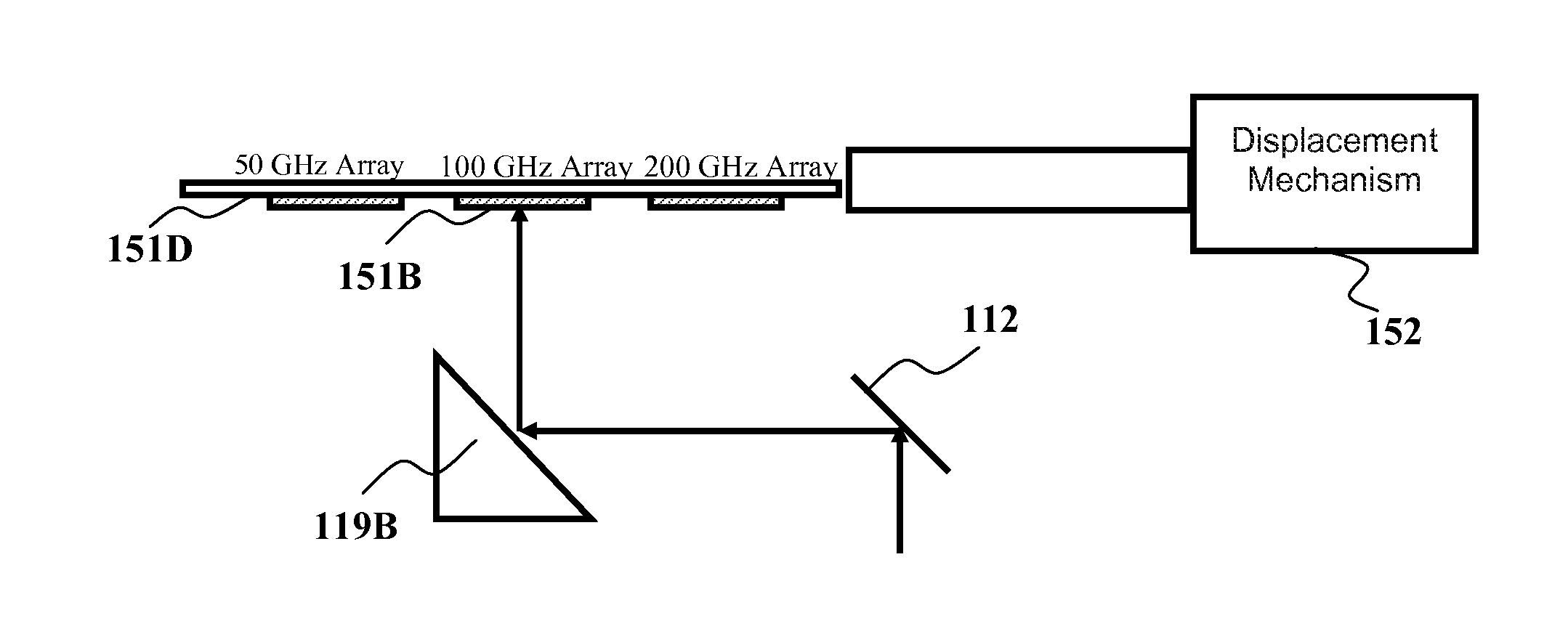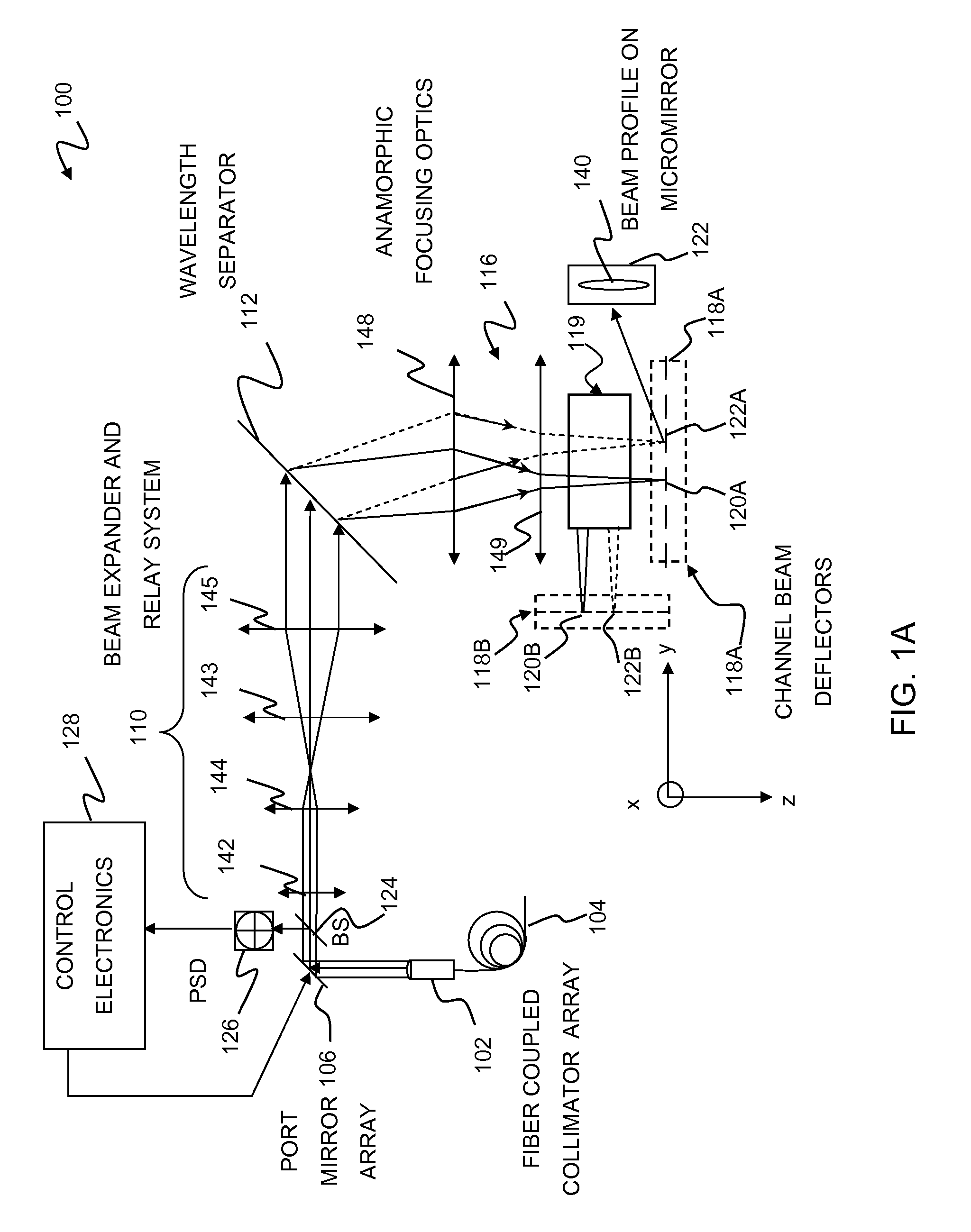Flex spectrum WSS
a technology of flex spectrum and optical network, applied in the field of optical communication system and wavelength division multiplexed optical network, can solve the problems of preventing optimization of key optical parameters of the system, such as passband, and insufficient anamorphic beam expansion created by gratings,
- Summary
- Abstract
- Description
- Claims
- Application Information
AI Technical Summary
Benefits of technology
Problems solved by technology
Method used
Image
Examples
Embodiment Construction
[0027]Although the following detailed description contains many specific details for the purposes of illustration, anyone of ordinary skill in the art will appreciate that many variations and alterations to the following details are within the scope of the invention. Accordingly, the embodiments of the invention described below are set forth without any loss of generality to, and without imposing limitations upon, the claimed invention.
[0028]FIG. 1A is a diagrammatic view that illustrates the architecture of a portion of a wavelength selective switch 100 in accordance with an embodiment of the invention. One or more wavelength selective switches having an architecture as shown in the figure and configured as ADD or DROP modules, may be combined in a ROADM at a node of a wavelength division multiplexed (WDM) optical network, for example. As shown, WSS 100 may comprise a fiber collimator array 102 which provides a plurality of input and output ports for optical signals that are input ...
PUM
 Login to View More
Login to View More Abstract
Description
Claims
Application Information
 Login to View More
Login to View More - R&D
- Intellectual Property
- Life Sciences
- Materials
- Tech Scout
- Unparalleled Data Quality
- Higher Quality Content
- 60% Fewer Hallucinations
Browse by: Latest US Patents, China's latest patents, Technical Efficacy Thesaurus, Application Domain, Technology Topic, Popular Technical Reports.
© 2025 PatSnap. All rights reserved.Legal|Privacy policy|Modern Slavery Act Transparency Statement|Sitemap|About US| Contact US: help@patsnap.com



